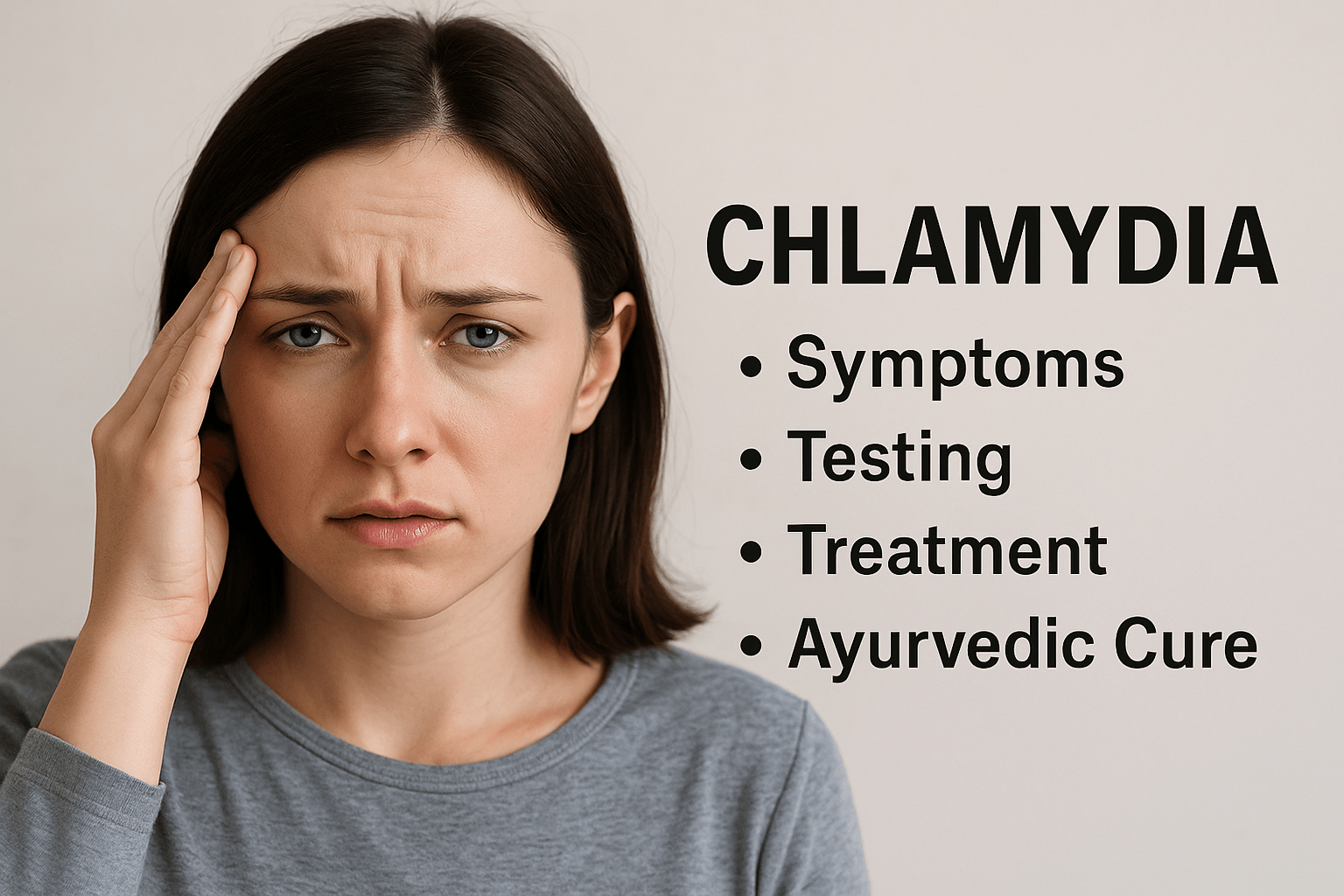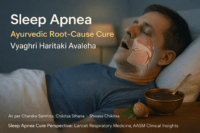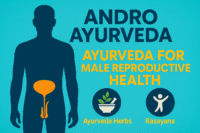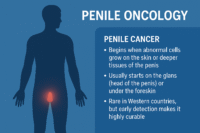- How Chlamydia Spreads
- Common Symptoms in Men and Women
- Symptoms in Women
- Symptoms in Men
- Complications if Left Untreated
- How Chlamydia Is Diagnosed
- Classical Indicators in Ayurvedic Texts
- Modern Treatment Options for Chlamydia
- Ayurvedic Considerations During and After Antibiotic Use
- Ayurvedic Understanding of Chlamydia
- Ayurvedic Principles for Chlamydia Cure
- Frequently Asked Questions (FAQs) About Chlamydia
- References
Chlamydia is one of the most common sexually transmitted infections (STIs) worldwide, caused by a bacterium called Chlamydia trachomatis. Unlike most bacteria, this organism is obligate intracellular, meaning it must enter human cells to survive and replicate. Once inside, it hijacks the host cell’s machinery to multiply silently, often without causing noticeable symptoms.
Chlamydia primarily infects the genital tract, but it can also affect the rectum, throat, and eyes. It spreads through unprotected vaginal, anal, or oral sex, and can also be passed from an infected mother to her baby during childbirth. In many cases, people carry the infection for weeks or months without knowing—making it a silent yet contagious disease.
From a clinical perspective, Chlamydia trachomatis belongs to a group of gram-negative bacteria but behaves more like a virus in terms of its life cycle. It has two distinct forms:
- Elementary bodies (EBs) – infectious, extracellular form that invades cells.
- Reticulate bodies (RBs) – intracellular form that multiplies within the host cell.
This cycle of entering the body, hiding inside cells, and avoiding early immune detection is what makes chlamydia particularly insidious. If left untreated, it can cause severe complications like pelvic inflammatory disease (PID), infertility, ectopic pregnancy, and chronic pelvic pain in women. In men, it can lead to testicular inflammation and reduced sperm quality.
Despite its risks, chlamydia is curable with early detection and treatment. However, reinfection is common, and untreated cases can lead to long-term damage without any early warning signs.
In Ayurveda, such infections are recognized under the concept of Aupasargika Rogas (infectious diseases) and Upadansha (venereal diseases). The involvement of Pitta and Kapha doshas, along with Shukra (reproductive) and Mutravaha (urinary) Srotas, forms the basis for holistic diagnosis and treatment in classical Ayurvedic medicine. The ancient texts not only recognize genital infections but also provide strategies to eliminate them from the root and restore full reproductive health.
Understanding chlamydia’s hidden nature is the first step toward breaking its cycle—both in modern diagnostics and Ayurvedic healing. The next section will explore how exactly this infection spreads within the body and between individuals.
How Chlamydia Spreads

Chlamydia is primarily transmitted through unprotected sexual contact, but its routes of spread are more complex than many realize. Understanding these pathways is critical for both prevention and treatment.
The most common mode of transmission is through vaginal, anal, or oral sex with an infected person [1]. Unlike some infections that require visible lesions or active symptoms to be contagious, chlamydia can be transmitted even when no symptoms are present [2]. This is because the bacterium resides in the genital fluids (semen and vaginal secretions) and can pass easily between mucosal membranes [3].
Transmission does not require ejaculation. Even brief genital contact can transfer the bacteria, especially if there are microabrasions on the skin or mucosa [4]. Sharing contaminated sex toys without proper disinfection or barrier protection is another overlooked route of infection [5].
Chlamydia can also be transmitted from mother to child during childbirth, leading to serious neonatal complications such as conjunctivitis and pneumonia in the newborn [6]. This vertical transmission underscores the importance of early screening and treatment during pregnancy.
In rare cases, chlamydia has been detected in the throat and rectum, especially in individuals who engage in oral or anal sex. These sites often remain asymptomatic but can serve as hidden reservoirs, enabling continued transmission without detection [7].
From an Ayurvedic perspective, the spread of chlamydia is classified under Aupasargika Vyadhi (communicable diseases), specifically Upadansha (venereal diseases) [8]. Ancient texts recognize multiple causes of such infections, including:
- Asatmyendriyartha Samyoga (incompatible sexual contact)
- Adharma (immoral behavior weakening Ojas)
- Abhishyandi Ahara (dietary factors that clog channels)
The Mutravaha Srotas (urinary channels) and Shukravaha Srotas (reproductive channels) are considered the primary routes through which the infection moves and settles [9]. Internal disharmony in Pitta (associated with heat and inflammation) and Kapha (linked to secretions and stagnation) facilitates the growth of such organisms within the system [10].
Chlamydia’s stealthy spread—especially among those who feel “perfectly healthy”—makes it a public health challenge. It moves silently, thrives intracellularly, and often goes undetected until complications arise. That’s why awareness, testing, and responsible sexual behavior play such crucial roles in breaking the chain of transmission.
Common Symptoms in Men and Women

Chlamydia is often described as a silent disease, but this silence masks its destructive potential. While most people show no immediate signs, the infection quietly advances—damaging tissues, altering fertility, and sometimes spreading beyond the reproductive tract. Symptoms, when they do appear, can be subtle, varied, and frequently misdiagnosed. Recognizing these signs—both well-known and overlooked—is essential for timely diagnosis and holistic treatment.
Why Chlamydia Often Goes Unnoticed
Up to 70% of infected women and 50% of infected men do not exhibit any symptoms during the early stages of chlamydia infection [1]. This absence of symptoms is not benign—studies reveal that tissue inflammation and internal scarring can begin even before any outward signs develop [2]. The incubation period typically spans 7 to 21 days, though symptoms may take longer or never emerge at all [3].
Symptoms in Women
When symptomatic, chlamydia in women typically begins in the cervix and urethra, progressing to the uterus, fallopian tubes, and ovaries. The following are the most commonly observed symptoms:
- Vaginal discharge: Usually mucopurulent (thick and yellow), but sometimes thin or watery. It may carry a foul or unusual odor [4].
- Burning during urination: Caused by urethral inflammation, often mistaken for a urinary tract infection [5].
- Pelvic pain: Especially during menstruation, ovulation, or intercourse. Pain may be sharp, cramping, or dull [6].
- Spotting between periods: A telltale sign of cervical erosion and vascular fragility due to infection [7].
- Bleeding after intercourse: Often a result of chronic cervicitis with fragile blood vessels [8].
- Painful intercourse (dyspareunia): Common in both early and chronic stages of infection [9].
Lesser-Known and Frequently Misdiagnosed Female Symptoms
Chlamydia’s presentation is often disguised as other gynecological or gastrointestinal conditions:
- Painful ovulation: Sharp, localized pelvic pain around mid-cycle (mittelschmerz) due to early fallopian tube inflammation [10].
- Postcoital cramps: Uterine cramping lasting hours after sex, often ignored or misattributed to endometriosis [11].
- Bloating and fullness: Mimicking irritable bowel syndrome, particularly in chronic pelvic inflammatory disease (PID) [12].
- Low backache or hip pain: Due to referred inflammation near the sacral plexus [13].
- Increased vaginal mucus or altered cervical mucus: May resemble ovulatory changes but persist beyond the fertile window [14].
- Recurrent bacterial vaginosis or yeast infections: Disruption of vaginal flora due to chronic cervicitis [15].
- Menstrual irregularities: Heavy bleeding, shorter cycles, or clotting due to chronic uterine inflammation [16].
- Painful urination without infection: Due to urethritis caused by chlamydia, even when urine tests are normal [17].
Symptoms in Men
In males, the urethra is the primary site of infection, followed by potential involvement of the testicles, epididymis, and prostate. Common symptoms include:
- Urethral discharge: Often clear, milky, or sticky—usually noticed on the underwear or during the first urination of the day [18].
- Burning sensation during urination: A classic sign of urethritis [19].
- Testicular pain or swelling: May occur in one or both testicles, linked to epididymitis [20].
- Scrotal heaviness: A dull, dragging sensation in the groin, often overlooked [21].
- Rectal discomfort or discharge: Especially in men who have sex with men (MSM), due to anal chlamydia [22].
Lesser-Known Male Symptoms
Symptoms may manifest subtly and be dismissed as fatigue or minor irritation:
- Itchy urethral opening: Even in the absence of discharge or redness [23].
- Low-grade fever or fatigue: Especially during initial immune response [24].
- Discomfort during ejaculation: Caused by infection of the seminal vesicles or prostate [25].
- Reduced sperm motility or abnormal sperm shapes: Documented in clinical studies, even in asymptomatic infections [26].
- Erectile dysfunction or reduced libido: Related to inflammatory damage or psychological burden [27].
Symptoms in Other Anatomical Sites
Chlamydia can infect sites beyond the genitals, often remaining undetected:
- Rectum: Symptoms include discharge, pain during defecation, bleeding, or anal itching. Frequently asymptomatic in women and MSM [28].
- Throat: Pharyngeal chlamydia may cause sore throat, redness, or go entirely unnoticed. Often misdiagnosed as viral pharyngitis [29].
- Eyes: Conjunctivitis, particularly in infants or through autoinoculation in adults. Marked by redness, sticky discharge, and swelling [30].
- Lungs (in newborns): Infants born to infected mothers may develop pneumonia without fever, presenting with chronic cough and rapid breathing [31].
Systemic and Autoimmune Symptoms
Chlamydia may trigger systemic symptoms in rare or chronic cases:
- Reactive arthritis (Reiter’s syndrome): Inflammation of the joints, eyes, and urethra—typically seen in young men [32].
- Mild headache and muscle aches: As part of systemic immune activation [33].
- Pelvic neuralgia: Deep, unexplained pelvic or leg pain caused by irritation of nerves near the reproductive tract [34].
Psychological and Emotional Effects
The emotional toll of chlamydia is often overlooked but significant:
- Guilt or anxiety over STI transmission or diagnosis [35].
- Relationship stress or sexual avoidance due to shame or discomfort [36].
- Fear of infertility especially in women post-diagnosis [37].
In Ayurvedic terms, these signs relate to Manovaha Srotas Dushti, where emotional imbalance arises from chronic dosha disturbances and reproductive organ stress.
Ayurvedic Interpretation of Symptom Presentation
Ayurveda classifies chlamydia under Upadansha, caused by Aupasargika karanas (contagious contact). Symptoms correspond to:
- Pitta Dushti: Burning sensation, inflammation, discharge, spotting
- Kapha Dushti: Mucosal overgrowth, swelling, excessive secretions
- Shukra Dushti: Abnormal seminal fluid, infertility
- Artava Dushti: Menstrual abnormalities, pain, bleeding
- Mutravaha and Shukravaha Srotas: Core channels affected in both sexes
Sushruta Samhita (Nidana Sthana 5/31) describes:
Upadanshaḥ tu saṁsargajam, yonipathena samprapadyate, dahaṁ sravaṁ ca janayati.
(Chlamydia arises from sexual contact, enters the genital path, and causes burning and discharges.) [38]
Ayurveda warns that chronic cases may evolve into Sannipatika Upadansha, involving all three doshas, requiring aggressive detox (Shodhana) and long-term Rasayana.
Chlamydia’s symptoms are often mistaken for routine issues—mild discharge, pelvic cramps, mood changes, or fatigue. But underneath these signs lies a progressive infection capable of reproductive harm, emotional distress, and systemic complications. While modern medicine relies on early screening and antibiotics, Ayurveda offers a unique advantage: the ability to recognize hidden patterns of dysfunction, correct the underlying doshic imbalances, and regenerate damaged tissue through Rasayana and Dhatu-level repair.
Complications if Left Untreated
Chlamydia may start silently, but if left untreated, it can lead to complications that affect multiple systems in the body—especially the reproductive, urinary, immune, and nervous systems. The longer the infection remains undiagnosed, the greater the risk of irreversible damage.
Complications in Women
One of the most serious consequences in women is Pelvic Inflammatory Disease (PID)—a condition where the infection spreads to the uterus, fallopian tubes, and ovaries [1]. PID can cause chronic pelvic pain, tubal scarring, and a much higher risk of infertility. In fact, approximately 1 in 5 women with untreated chlamydia will eventually develop PID [2].
When the fallopian tubes are inflamed or scarred, the risk of a life-threatening ectopic pregnancy increases significantly [3]. In such cases, a fertilized egg implants outside the uterus, typically in the fallopian tube, leading to rupture, hemorrhage, and emergency surgery.
Chronic chlamydia can also result in recurrent vaginal infections, heavy or irregular menstrual bleeding, and persistent discomfort during sex. These complications often mimic hormonal disorders or pelvic floor dysfunction, which delays accurate diagnosis [4].
Complications in Men
In men, untreated chlamydia may lead to epididymitis, a painful condition that affects the coiled tube at the back of the testicle responsible for sperm storage [5]. If left unmanaged, this can evolve into orchitis (testicular inflammation), scrotal abscesses, and subfertility due to damage to the sperm-carrying structures [6].
Another overlooked complication is chronic prostatitis, characterized by pelvic discomfort, painful ejaculation, sexual dysfunction, and urinary issues. It is often misdiagnosed as a urological disorder, but chlamydia-induced inflammation is a known contributor [7].
Men may also develop urethral strictures, where inflammation causes narrowing of the urethra. This leads to weak urine flow, dribbling, and recurrent infections that often require surgical intervention [8].
Complications in Both Genders
In both men and women, chlamydia can increase susceptibility to HIV, especially if genital inflammation is present [9]. Studies show that untreated STIs like chlamydia double or triple the risk of acquiring or transmitting HIV due to mucosal damage and immune suppression [10].
Another significant risk is the development of Reactive Arthritis (Reiter’s Syndrome)—a post-infectious autoimmune reaction characterized by joint pain, redness in the eyes, and urethritis [11]. Though rare, this condition can become chronic and severely affect mobility.
Chlamydia can also cause infections in the throat, rectum, and conjunctiva of the eye, especially in people exposed through oral or anal sex or autoinoculation. In neonates born to infected mothers, it may result in conjunctivitis or pneumonia, which can be fatal if untreated [12].
Infertility: A Long-Term Consequence
One of the most devastating outcomes of untreated chlamydia is permanent infertility, particularly in women. Even a single episode of asymptomatic chlamydia can lead to silent tubal scarring, which prevents conception or causes repeated miscarriages [13].
In men, damage to the epididymis, vas deferens, or seminal vesicles may reduce sperm count or quality. These changes often go unnoticed until fertility testing is done years later.
Ayurvedic Interpretation of Complications
In Ayurveda, these long-term complications are explained through the gradual vitiation of Srotas (body channels), Dhatu kshaya (tissue depletion), and Dushti (toxicity). Untreated infections are considered Vikrita Upadansha, where initial dosha imbalance becomes more severe and spreads deeper.
For women, fallopian tube blockages and recurrent miscarriage correlate with Artavavaha Srotodushti, Beeja Dushti, and Yoni Vyapad disorders. Heavy bleeding or ectopic risks fall under Raktavaha Srotas dysfunction. If ignored, this leads to Sannipataja Yoni Roga, where all three doshas are disturbed [14].
In men, Shukra Kshaya (depletion of reproductive tissue), Vankshana Shula (groin pain), and Basti Gata Shoola (pelvic nerve pain) are noted in texts as complications of unresolved genital infections. When semen is thick, discolored, or reduced in volume, classical texts attribute this to Shukravaha Srotodushti and Pittaja Shukrameha [15].
How Chlamydia Is Diagnosed
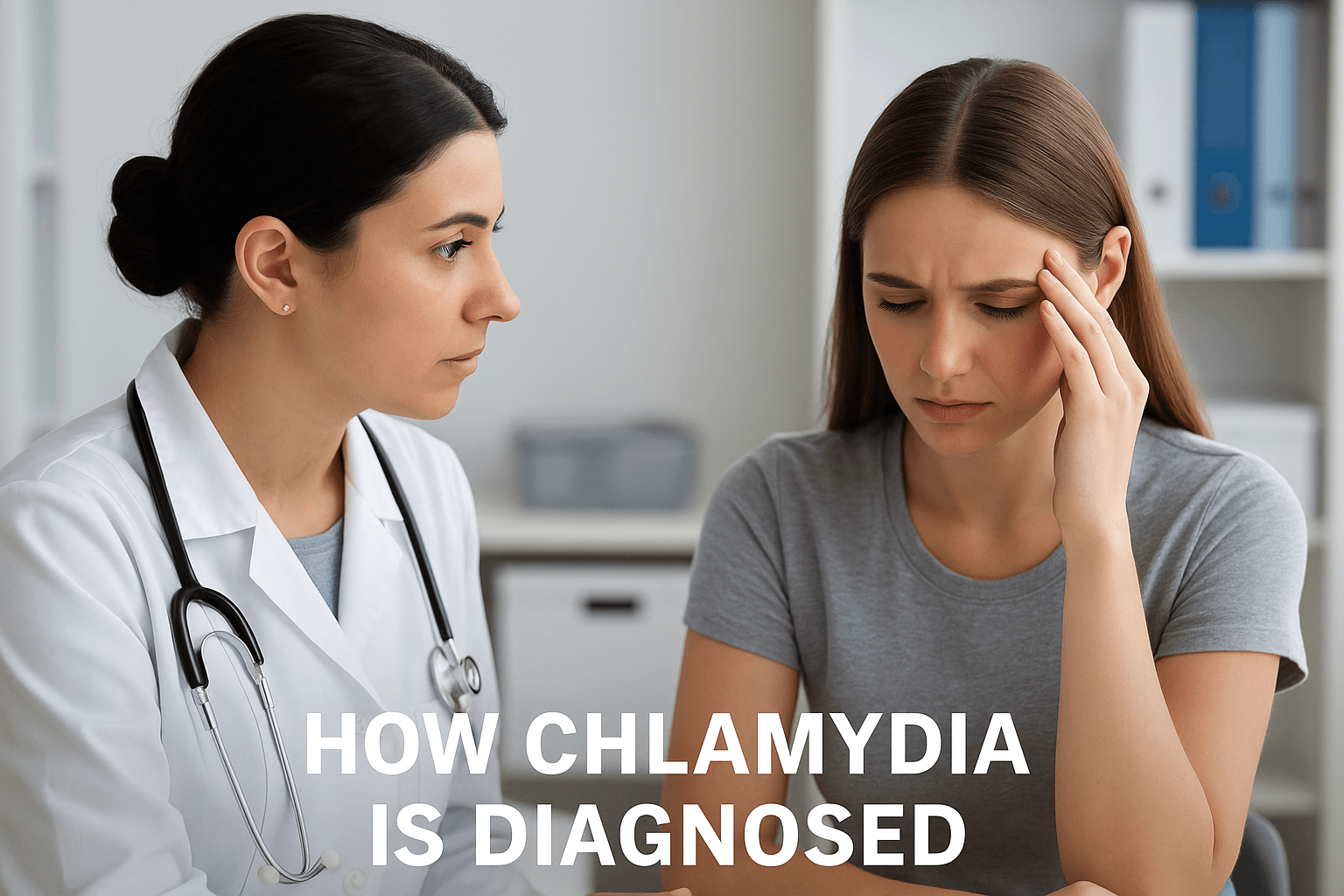
Chlamydia is often missed not because diagnostic tools are lacking, but because people rarely suspect it—especially when there are no visible symptoms. Since untreated chlamydia can cause silent yet severe reproductive harm, proper testing is essential for detection, confirmation, and follow-up.
Why Routine Testing Is Critical
Because up to 70% of female cases and 50% of male cases are asymptomatic, routine screening is considered a public health necessity, especially in sexually active individuals under age 25 or those with new or multiple partners [1]. The U.S. Centers for Disease Control and Prevention (CDC) recommends annual screening for:
- All sexually active women under 25
- Women over 25 with risk factors (e.g., new sexual partner)
- Pregnant women at their first prenatal visit [2]
Men are less frequently screened, but testing is advised in:
- MSM (men who have sex with men)
- Men with urethral symptoms or known exposure
Modern Diagnostic Methods
The current gold standard for detecting chlamydia is NAAT—Nucleic Acid Amplification Testing. This test detects the genetic material of Chlamydia trachomatis with extremely high sensitivity and specificity.
Types of Samples Used
- Urine samples: Most common, especially for men. The first catch of morning urine provides the best detection rate [3].
- Vaginal swabs: Self-collected or provider-collected; the most accurate method for women [4].
- Endocervical swabs: Used during pelvic exams, especially in clinical settings.
- Rectal and throat swabs: Recommended for those with receptive anal or oral sex, such as MSM and transgender patients [5].
Turnaround Time
Results are usually available within 1–3 days, depending on the laboratory.
Limitations of NAAT and Testing Considerations
Though NAAT is highly accurate, several important limitations apply:
- False negatives can occur if tested too early—before the bacteria have reached detectable levels (i.e., within 3–5 days of exposure) [6].
- Rectal or throat infections may be missed if only urine testing is done. Comprehensive anatomical site testing is essential for accurate diagnosis [7].
- Co-infection with gonorrhea is common (up to 40% of cases), so combined STI testing is often advised [8].
Repeat Testing and Retesting
Retesting is strongly advised in the following situations:
- 3 months after treatment, especially for younger patients or those with high reinfection risk [9]
- During third trimester of pregnancy if previously tested positive
- If symptoms persist despite treatment (suggesting resistance or reinfection)
Chlamydia in Pregnancy: Special Screening Guidelines
Pregnant women diagnosed with chlamydia should undergo:
- Initial screening during the first prenatal check-up
- Test-of-cure at 3–4 weeks after treatment
- Repeat testing at 36 weeks, especially if reinfection risk exists
This is because untreated chlamydia during pregnancy can cause preterm labor, low birth weight, neonatal pneumonia, and conjunctivitis in newborns [10].
Ayurvedic Interpretation of Diagnosis
In Ayurveda, while no physical lab test exists in the classical texts, diagnosis is made through Lakshana Pariksha (symptom evaluation), Srotas Pariksha (channel assessment), and Mutra–Shukra examination. Chronic infections like chlamydia often involve:
- Shukravaha Srotas Dushti: Abnormal seminal quality, penile discharge, scrotal discomfort
- Artavavaha Srotas Dushti: Irregular menses, spotting, or chronic vaginal discharge
- Mutravaha Srotas Dushti: Burning urination, frequent urination, urine discoloration
- Raktavaha and Manovaha Srotas Dushti: Signs of systemic inflammation or emotional stress
Classical Indicators in Ayurvedic Texts
Sushruta and Vagbhata mention specific genital disorders like:
- Upadansha: Ulcerative or non-ulcerative STIs with discharge
- Shukrameha: Seminal abnormalities or genital fluid leakage
- Yoni Vyapad: Female disorders characterized by altered flow, color, or pain
Mutra Pariksha (urine analysis) in classical Ayurveda was done by observing the urine’s:
- Color (Peetata – yellow; indicative of Pitta)
- Smell (Durgandhita – foul-smelling; indicative of Kapha–Pitta aggravation)
- Consistency (Viscous or cloudy urine in Kapha dominance)
While not molecular-level diagnostics, these qualitative assessments aligned with systemic observations and doshic patterns.
The Ideal Diagnostic Integration
The most holistic diagnostic approach for chlamydia today involves:
- Modern lab testing (NAAT) for confirmation and site specificity
- Ayurvedic assessment for systemic dosha mapping and reproductive health evaluation
- Comprehensive testing in both partners, even if one is asymptomatic
Periodic follow-up testing in chronic cases to confirm eradication and monitor post-infectious symptoms like joint pain or nerve issues
Modern Treatment Options for Chlamydia
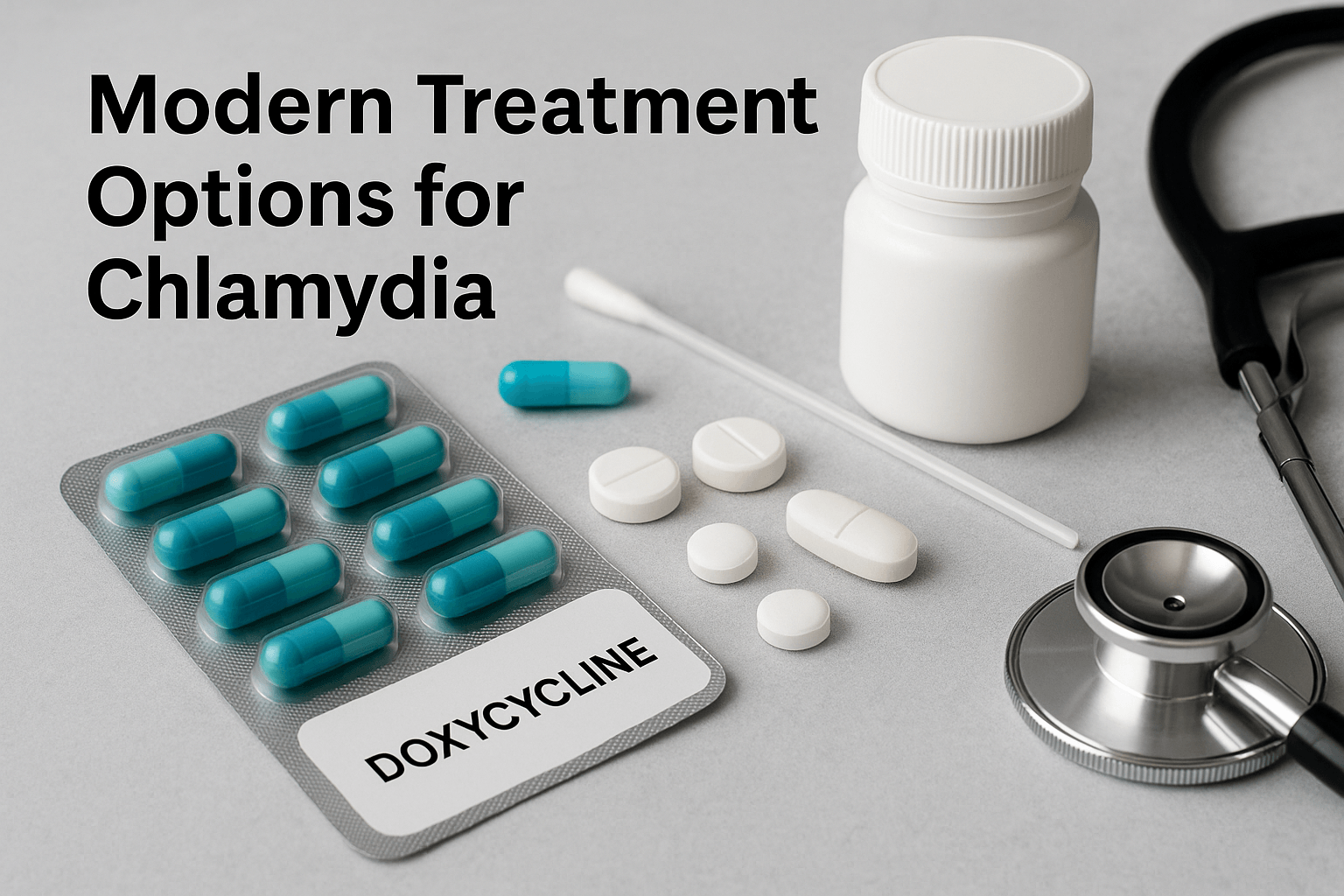
Timely treatment is the most effective way to prevent the long-term consequences of chlamydia. Once detected, Chlamydia trachomatis can be completely eradicated with antibiotics. However, the selection of medication, adherence to the regimen, partner treatment, and follow-up testing all determine whether the infection is truly cleared or silently persists.
First-Line Medical Therapy
Modern medicine recommends two main antibiotics for uncomplicated urogenital chlamydia. The first-line option is doxycycline, administered as 100 mg twice daily for seven days. In cases where patient compliance is uncertain, or where there are concerns regarding gastrointestinal tolerability, azithromycin is used as a single 1-gram oral dose. Both regimens have high cure rates, with doxycycline proving slightly more effective, especially in rectal infections, which are often underdiagnosed in both men and women [1].
For individuals who are allergic to tetracyclines or macrolides, alternatives such as levofloxacin or ofloxacin may be considered, although these are used less frequently due to their broader spectrum and higher risk of side effects [2].
Treatment During Pregnancy
In pregnant women, chlamydia poses significant risks to both mother and fetus. It is associated with premature rupture of membranes, preterm labor, neonatal conjunctivitis, and pneumonia. Azithromycin remains the preferred option in pregnancy due to its safety profile and ease of administration. In cases of azithromycin intolerance, amoxicillin may be prescribed. Treatment should always be followed by a test-of-cure after three to four weeks and again during the third trimester to ensure that reinfection has not occurred [3].
Partner Notification and Reinfection Prevention
Treating the infected individual without addressing their recent sexual partners significantly increases the risk of reinfection. Current guidelines recommend that all sexual partners from the preceding sixty days be notified, tested, and treated, regardless of symptoms. Expedited partner therapy, a system in which medication or prescriptions are provided to the patient’s partner without a separate clinical evaluation, is increasingly being adopted to reduce reinfection rates, especially in resource-limited settings [4].
Timing of Sexual Activity After Treatment
It is strongly advised that patients abstain from all forms of sexual contact for a minimum of seven days after the initiation of treatment. This precaution is necessary to allow the antibiotic to fully clear the infection and to avoid reinfecting a recently treated partner. Resuming sexual activity prematurely is one of the most common reasons for treatment failure or recurrence [5].
Management of Persistent or Resistant Infections
In rare instances, chlamydia symptoms may persist despite correct antibiotic use. This could be due to noncompliance, reinfection from an untreated partner, or the presence of antibiotic-resistant strains. When symptoms do not resolve after two courses of therapy, the patient should be evaluated for other coinfections such as gonorrhea or Mycoplasma genitalium, which may require different treatment protocols. Molecular testing and extended antibiotic courses may be necessary in such cases [6].
Coinfection and Broader STI Management
Chlamydia often does not occur in isolation. Studies have shown that up to 40% of patients diagnosed with chlamydia also carry gonorrhea. As a result, dual therapy is often initiated, which includes ceftriaxone for gonorrhea alongside doxycycline for chlamydia. When trichomoniasis is suspected, particularly in women with recurrent discharge, additional medications such as metronidazole may be added. These combinations are designed to cover the most common STI pathogens in one comprehensive protocol [7].
Follow-Up Testing and Reinfection Surveillance
Patients who have been treated for chlamydia are advised to return for retesting after three months. This recommendation is especially important for younger individuals under 25, those with a history of repeated infections, and pregnant women. Reinfection rates in these populations are among the highest. In cases where symptoms return or persist, a full STI screening is warranted. Delay in retesting can allow the infection to silently damage reproductive organs and increase the risk of long-term complications such as infertility or chronic pelvic pain [8].
Antibiotic Side Effects and Cautions
While generally safe, chlamydia antibiotics can cause adverse reactions. Doxycycline may lead to nausea, vomiting, sun sensitivity, and esophageal irritation if not taken with sufficient water. Azithromycin is better tolerated but may cause mild gastrointestinal upset. Women are particularly vulnerable to developing secondary yeast infections after antibiotic use due to disruption of natural vaginal flora. Patients should be advised to complete the full course and avoid dairy or antacids when taking doxycycline, as these can interfere with absorption [9].
Ayurvedic Considerations During and After Antibiotic Use
Although antibiotics rapidly eliminate the bacterium, they often leave behind subtle imbalances that Ayurveda seeks to correct. From an Ayurvedic viewpoint, antibiotic therapy is equivalent to aggressive krimighna treatment that targets the pathogen but may disturb Agni (digestive fire), lead to Aama (toxin accumulation), and reduce Ojas (vitality). Therefore, it is advised that during the antibiotic phase, strong Rasayanas or mineral-based herbs not be taken concurrently, as they may interfere with drug metabolism or suppress the natural detoxification pathways.
After antibiotic completion, specific Ayurvedic measures can be introduced to rebuild systemic harmony. These include mild digestive restoratives like Triphala, liver detoxifiers such as Musta and Daruharidra, and reproductive Rasayanas like Shatavari and Ashwagandha. In cases of post-infectious weakness, fatigue, or tissue depletion, Bhasma therapies such as Swarna Makshik or Abhrak Bhasma may be cautiously introduced under physician guidance [10].
Ayurvedic Considerations During and After Antibiotic Use
Although antibiotics rapidly eliminate the bacterium, they often leave behind subtle imbalances that Ayurveda seeks to correct. From an Ayurvedic viewpoint, antibiotic therapy is equivalent to aggressive krimighna treatment that targets the pathogen but may disturb Agni (digestive fire), lead to Aama (toxin accumulation), and reduce Ojas (vitality). Therefore, it is advised that during the antibiotic phase, strong Rasayanas or mineral-based herbs not be taken concurrently, as they may interfere with drug metabolism or suppress the natural detoxification pathways.
After antibiotic completion, specific Ayurvedic measures can be introduced to rebuild systemic harmony. These include mild digestive restoratives like Triphala, liver detoxifiers such as Musta and Daruharidra, and reproductive Rasayanas like Shatavari and Ashwagandha. In cases of post-infectious weakness, fatigue, or tissue depletion, Bhasma therapies such as Swarna Makshik or Abhrak Bhasma may be cautiously introduced under physician guidance [10].
Ayurvedic Understanding of Chlamydia
Chlamydia, though not explicitly named in classical Ayurvedic texts, can be interpreted through the lens of Upadansha, Shukradushti, and Srotodushti—terms that describe infectious conditions of the reproductive and urinary systems. These concepts offer a deeper understanding of the disease’s root causes, systemic effects, and long-term complications beyond the microbial framework of modern medicine.
Chlamydia as a Krimi-Janya Vyadhi
Ayurveda classifies certain diseases caused by invisible organisms under Krimi (microorganism or parasite-induced) disorders. Chlamydia trachomatis fits this categorization as a Drishta-Adrishta Krimi, an organism not seen by the naked eye but known through its effects on the body. Unlike external parasites (Bahya Krimi), internal Krimi multiply within bodily tissues and can affect Shukra Dhatu (reproductive tissue), Rakta Dhatu (blood), and even the Majja Dhatu (nervous tissue) in long-standing infections [1].
In Bhavaprakasha Nighantu (Krimiroga Adhikara), descriptions are given of Krimi-induced genital discharges, pain during urination, burning sensation, and sexual debility—symptoms highly similar to those caused by chlamydia. Therefore, Ayurvedic diagnosis goes beyond identifying the infection to understanding the Dosha, Dhatu, and Srotas involved [2].
Dosha Involvement in Chlamydial Infection
The primary Doshas affected in chlamydia are Pitta and Vata. The inflammation, burning sensation, and purulent discharges are hallmarks of Pitta aggravation, while the pain, discomfort during intercourse, and movement of the infection into deeper tissues point to Vata vitiation.
In women, Artavavaha Srotas (channels of menstrual and reproductive flow) and Mutravaha Srotas (urinary tract) are involved, while in men, Shukravaha Srotas and Majjavaha Srotas may be impacted in chronic stages. If left untreated, Vata can carry the vitiated Doshas deeper into the Garbhashaya (uterus), Yoni (vagina), or even the Majja Dhatu, leading to complications like infertility or joint-related symptoms such as Reiter’s syndrome (Ayurvedically explained as Sandhigata Vata) [3].
Upadansha: The Closest Ayurvedic Correlate
Chlamydia bears strong resemblance to Upadansha, a Urdhvagata Veneriya Rog (ascending venereal disease). According to Charaka Samhita Chikitsa Sthana 1.3, Upadansha manifests with symptoms like genital swelling, burning sensation, discharge, pain during urination, and systemic weakness. When accompanied by Yoni Kandu (itching), Shukra Srava (seminal or mucosal discharge), and Vedana (pain), it confirms deeper reproductive involvement.
In advanced stages, Upadansha is said to cause Moha (mental clouding), Jwara (fever), and Daurbalya (fatigue)—all of which are now acknowledged as systemic symptoms of untreated chlamydia or post-infectious autoimmune responses [4].
Srotas Involvement and Systemic Spread
Srotas are subtle channels that transport nutrients and remove waste. Chlamydia’s progression can be mapped to specific Srotodushti (pathological changes in body channels). In females, the infection commonly spreads through:
- Mutravaha Srotas (urinary tract): leading to UTI-like symptoms.
- Artavavaha Srotas (menstrual and reproductive channels): causing intermenstrual bleeding, pelvic pain, or ovulatory discomfort.
- Raktavaha Srotas (blood channels): systemic fatigue, low immunity.
- Shukravaha Srotas (seminal channels in men): resulting in low sperm count, motility, or urethral discharge [5].
These systemic pathways mirror modern findings of chlamydia invading epithelial cells and traveling via lymph or bloodstream to joints, eyes, and reproductive organs.
Nidana: The Root Causes According to Ayurveda
Ayurveda outlines various behavioral and lifestyle triggers that correspond closely to modern chlamydia risk factors. Apathyasevana (improper sexual conduct), Atigamana (excessive intercourse), Asatmya Mithuna (sex with incompatible or infected partners), and suppression of natural urges (such as urination or ejaculation) create an internal terrain conducive to infection.
These behaviors disturb the Doshas and weaken Ojas (vitality/immunity), which is responsible for defense against internal Krimi. A lowered Ojas state not only facilitates infection but also delays recovery and enhances recurrence risk, especially in those with frequent exposure or compromised immunity [6].
Shatkriyakala: Stages of Chlamydia Progression
Ayurveda describes the progression of any disease in six stages, known as Shatkriyakala:
- Sanchaya (Accumulation) – Doshas begin to accumulate due to risky behavior or lowered immunity.
- Prakopa (Aggravation) – Burning urination, itching, or subtle discharges begin.
- Prasara (Spread) – Infection travels to pelvic organs or urethra.
- Sthanasamshraya (Localization) – Tissue-specific symptoms arise (e.g., cervix, fallopian tubes, joints).
- Vyakti (Manifestation) – Classic clinical symptoms appear.
- Bheda (Complication) – Chronic PID, infertility, or reactive arthritis set in [7].
Understanding this model helps design a stage-specific Rasayana and Shodhana (cleansing) strategy for each patient.
Role of Agni and Aama in Recurrence
Agni (digestive and tissue metabolism) is central in defending the body from disease. A compromised Agni leads to Aama (metabolic toxins), which blocks the Srotas and further aggravates the Doshas. Patients with poor digestion, chronic antibiotic use, or improper diet during infection may accumulate Aama, increasing the likelihood of recurrence or coinfections like Trichomonas or Candida.
Hence, restoring Agni is a top priority in the Ayurvedic treatment plan—alongside Rasayana for tissue rejuvenation and Ojas reinforcement [8].
Ayurvedic Principles for Chlamydia Cure
Chlamydia, as understood through the Ayurvedic lens, is a manifestation of internal Dosha imbalance (Vata–Pitta dominancy), Srotas obstruction, and depletion of Shukra Dhatu (reproductive tissue). The goal of Ayurvedic treatment is not just microbial elimination, but deep-rooted healing—restoring Agni, clearing Aama, purifying Srotas, and rejuvenating the Dhatus. Unlike modern medicine that focuses on pathogen suppression through antibiotics, Ayurveda emphasizes personalized multi-layered interventions involving herbal, mineral, and Rasayana therapies for complete recovery.
Personalized Treatment According to Dosha and Srotas Involvement
In Ayurvedic medicine, no single herb or formula is prescribed for all. Treatment begins with Rogi-Roga Pariksha (examination of patient and disease), identifying the dominant Doshas, affected Srotas, and presence of Aama.
- Vata-Pitta dominant cases present with burning urination, pain, and dryness. These are treated with Mridu Shodhana (gentle detox), followed by Pitta-Vata shamaka herbs like Chandana (Santalum album), Usheera (Vetiveria zizanioides), and Guduchi (Tinospora cordifolia) [1].
- Chronic or recurrent infections, often involving Shukravaha Srotas and Raktavaha Srotas, require deep tissue Rasayana like Ashwagandha (Withania somnifera), Shatavari (Asparagus racemosus), and mineral-based formulations such as Swarna Makshika Bhasma and Trivanga Bhasma [2].
Shodhana: Cleansing Therapies to Break the Cycle
If the patient has Aama, sluggish digestion, or history of repeated antibiotic use, Shodhana (purification) becomes essential. In such cases:
- Virechana (purgation) with Trivrit (Operculina turpethum) is used to eliminate Pitta and clear pelvic inflammation.
- Basti (medicated enema) with Dashamoola and Bala Taila addresses deep-seated Vata-related complications like pelvic pain, neuralgia, and infertility.
- For females with cervical or uterine involvement, Yoni Prakshalana (vaginal wash) and Yoni Pichu (vaginal tampon therapy) using Triphala decoction and Jatyadi Taila are prescribed to clear local inflammation and discharge [3].
Shodhana is optional and only recommended if the patient is strong enough (Bala) and has Agni that can be supported post-cleansing.
Vyadhiharan Rasayana and Anti-Krimi Action
In cases of confirmed microbial presence (through DNA PCR), Vyadhiharan Rasayana—disease-eradicating rejuvenatives—are prioritized. Herbs and compounds with proven anti-bacterial and Rasayana action are:
- Vidanga (Embelia ribes) – classic anti-Krimi herb with rejuvenating potential.
- Guduchi (Tinospora cordifolia) – acts as immunomodulator, detoxifier, and tissue healer [4].
- Arogyavardhini Vati – balances Pitta, detoxifies liver and Rakta Dhatu, useful in chronic STIs.
- Gandhak Rasayan – purified sulfur compound known for Shodhana, Krimighna, and Rasayana actions. Modern research confirms its antimicrobial and immune-enhancing properties [5].
Mineral-based Rasayana like Trivanga Bhasma (lead–tin–zinc combination) and Swarna Makshik Bhasma are indicated when sexual weakness, Shukra Dhatu depletion, or hormonal imbalance is present.
Rasayana for Dhatu Rejuvenation and Fertility Restoration
After initial cleansing or anti-Krimi therapy, Rasayana therapy becomes essential. Chlamydia often damages the Shukra and Artava Dhatu, compromising reproductive function.
- Ashwagandha improves sperm quality and quantity.
- Shatavari rejuvenates female reproductive tract, regulates ovulation, and heals the endometrium.
- Makardhwaj Ras and Kameshwari Ras may be used judiciously for low libido, fatigue, and fertility issues—under expert guidance.
- For systemic weakness, herbs like Amalaki (Emblica officinalis), Haritaki (Terminalia chebula), and Pippali (Piper longum) are combined as Triphala Rasayana to restore metabolic fire and tissue clarity [6].
Diet and Lifestyle to Support Healing
Food is medicine in Ayurveda. The patient is advised a light, Pitta-pacifying diet:
- Warm water, rice gruel (Yavagu), green moong dal, cooked vegetables, and buttermilk are supportive.
- Avoid sour, spicy, fermented foods, heavy meats, alcohol, and late-night activities, all of which aggravate Pitta and impair Ojas.
- Sexual rest is advised during treatment to preserve Ojas and avoid further aggravation of Shukra Dhatu.
Ayurvedic Prognosis
When addressed early and treated holistically, Chlamydia can be fully reversed through Ayurvedic medicine. Chronic cases may require longer Rasayana support (3–6 months), especially if there is a history of PID, infertility, or post-infectious arthritis. The key to complete eradication lies in breaking the cycle of reinfection and deeply nourishing the reproductive and immune systems.
Frequently Asked Questions (FAQs) About Chlamydia
1. What is the most accurate test to diagnose chlamydia?
The most reliable diagnostic method is the Nucleic Acid Amplification Test (NAAT), performed on either a urine sample or a vaginal/cervical swab. For men, first-catch urine is recommended. For women, self-collected vaginal swabs offer higher sensitivity. Blood tests are not used for detecting active chlamydia but may help in identifying long-term complications or coinfections.
2. Can chlamydia go away on its own without antibiotics or Ayurvedic herbs?
In rare cases, especially among individuals with strong immunity and low pathogen load, spontaneous resolution may occur. However, the risk of silent progression into chronic complications is high. Ayurveda emphasizes clearing the infection completely and preventing tissue damage using Krimighna herbs, immune Rasayanas, and lifestyle corrections.
3. How long after exposure do chlamydia symptoms appear?
Symptoms may arise between 7 to 21 days post-exposure, although many individuals remain asymptomatic for weeks or months. Women, in particular, may not notice early signs due to the internal location of infection. Ayurveda notes that initial warning signs may manifest subtly as pelvic heaviness, tiredness, or vaginal discharge before more severe symptoms develop.
4. What are the first symptoms of chlamydia in men and women?
In women, early signs include abnormal discharge, pain during intercourse, intermenstrual bleeding, and burning while urinating. Men may experience urethral discharge, painful urination, testicular discomfort, or scrotal swelling. Less-known signs include conjunctivitis, sore throat, or rectal inflammation, depending on the route of transmission.
5. Can chlamydia be transmitted through oral or anal sex?
Yes, chlamydia can infect the throat, anus, or rectum through unprotected oral and anal intercourse. Throat infections may remain asymptomatic or cause mild soreness, while rectal infections may result in bleeding, discharge, or irritation. Ayurveda identifies these as distinct Krimi sites that require local cleansing and internal balancing treatments.
6. Is there a permanent cure for chlamydia in Ayurveda?
Ayurveda offers a complete cure based on pathogen elimination, immune rebuilding, and Srotas repair. Treatment includes antibacterial herbs (Krimighna), detoxification (Shodhana), and tissue rejuvenation (Rasayana). Personalized protocols ensure complete eradication of the pathogen and restoration of reproductive and immune function, minimizing recurrence risk.
7. Can you have chlamydia without knowing it?
Yes. Around 70% of infected women and 50% of men may not show symptoms initially. The infection can silently damage reproductive tissues and spread to others. Ayurveda describes this as Sukshma Krimi Avastha, where the pathogen hides in deeper tissues without producing gross symptoms, making regular screening and subtle symptom assessment essential.
8. What happens if chlamydia is left untreated?
Untreated chlamydia can result in pelvic inflammatory disease (PID), ectopic pregnancy, infertility, and joint inflammation. In men, complications may include epididymitis, prostatitis, and reactive arthritis. From an Ayurvedic view, prolonged infection causes progressive Srotodushti (channel damage) and affects reproductive vitality, Ojas, and systemic immunity.
9. Can I get infected again after successful treatment?
Yes, reinfection is common if a sexual partner remains untreated or if exposure occurs again. Both partners should be treated simultaneously. Ayurveda recommends synchronized Rasayana and hygiene protocols for both individuals, along with post-treatment immune strengthening to reduce susceptibility to recurrence.
10. Does chlamydia affect fertility in both sexes?
Chlamydia can lead to blocked fallopian tubes, impaired uterine lining, and ectopic pregnancies in women. In men, it may cause low sperm count, motility issues, and testicular inflammation. Ayurveda attributes these effects to Shukra Dushti (sperm damage) and Artava Dushti (menstrual disturbance), and addresses them through reproductive Rasayanas and targeted detoxification.
11. What foods should be avoided or preferred during chlamydia treatment?
During the active infection phase, avoid spicy, fermented, or heavy foods. Favor warm, light meals like rice porridge, lentil soups, steamed vegetables, and ghee. Once the infection is cleared, Rasayana-supporting foods like milk, almonds, dates, seasonal fruits, and herbal infusions are included to support tissue regeneration and immunity.
12. Can the infection return even after completing Ayurvedic treatment?
If the Ayurvedic protocol is incomplete or if lifestyle factors are ignored, recurrence is possible. However, when the full three-stage treatment—eliminating the pathogen, rejuvenating tissues, and correcting Srotas—is followed under supervision, long-term recovery is achievable. Maintenance Rasayana and periodic follow-up support sustained immunity.
References
1. Gaydos, C. A. (2020). Review of use of NAAT for detection of chlamydia and gonorrhea. Clinical Infectious Diseases, 70(5), 918–924. https://doi.org/10.1093/cid/ciz1104
2. Workowski, K. A., & Bolan, G. A. (2015). Sexually transmitted diseases treatment guidelines, 2015. MMWR. Recommendations and Reports, 64(3), 1–137. https://www.cdc.gov/std/tg2015/tg-2015-print.pdf
3. Brunham, R. C., & Rey-Ladino, J. (2005). Immunology of Chlamydia infection: Implications for a Chlamydia trachomatis vaccine. Nature Reviews Immunology, 5(2), 149–161. https://doi.org/10.1038/nri1551
4. Stamm, W. E. (2001). Chlamydia trachomatis infections: Progress and problems. The Journal of Infectious Diseases, 183(Suppl_1), S1–S9. https://doi.org/10.1086/318850
5. Schachter, J., & Moncada, J. (2005). Lymphogranuloma venereum and rectal chlamydia: Emerging problems. Journal of Clinical Microbiology, 43(8), 3859–3863. https://doi.org/10.1128/JCM.43.8.3859-3863.2005
6. Sharangdhar Samhita, Madhyam Khand, Chapter 2 – Krimighna Dravya Varga. Chowkhamba Publisher.
7. Bhavaprakasha Nighantu, Krimi Nidan, Chapter 5. Commentary by Acharya K.C. Chunekar. Chaukhambha Bharati Academy.
8. Centers for Disease Control and Prevention (CDC). (2021). Chlamydia – CDC Fact Sheet (Detailed). https://www.cdc.gov/std/chlamydia/stdfact-chlamydia-detailed.htm
9. Charaka Samhita, Chikitsasthana 7/40–48. Commentary by Chakrapani Datta. Chowkhamba Sanskrit Series.
10. Hillis, S. D., Owens, L. M., Marchbanks, P. A., Amsterdam, L. F., & Mac Kenzie, W. R. (1997). Recurrent chlamydial infections increase the risks of hospitalization and pelvic inflammatory disease. Journal of Infectious Diseases, 176(4), 1032–1037. https://doi.org/10.1086/514113
11. Sushruta Samhita, Sutrasthana, Chapter 46 – Pathya-Apathya Kalpana. Commentary by Dalhana. Chowkhamba Orientalia.
12. Abou Chacra, L., & Abdallah, D. (2020). Recurrent sexually transmitted infections: Causes, prevention, and personalized therapy. Sexual & Reproductive Healthcare, 25, 100523. https://doi.org/10.1016/j.srhc.2020.100523
13. Taylor-Robinson, D. (2017). The role of Chlamydia trachomatis in genital tract and associated diseases. Journal of Clinical Pathology, 70(3), 161–167. https://doi.org/10.1136/jclinpath-2016-203847
14. Paavonen, J. (2003). Chlamydia trachomatis infections of the female genital tract: State of the art. Annals of Medicine, 35(2), 131–137. https://doi.org/10.1080/07853890310007353
15. Rajaram, S., & Singh, S. (2012). Traditional Indian herbal medicine used as antipyretic, antiulcer, anti-diabetic and anti-inflammatory agents: A review. International Journal of Research in Pharmacy and Chemistry, 2(4), 1050–1058.
16. Mishra, L. C., Singh, B. B., & Dagenais, S. (2001). Scientific basis for the therapeutic use of Withania somnifera (Ashwagandha): A review. Alternative Medicine Review, 5(4), 334–346.
17. Verma, S., & Singh, S. P. (2011). Current and future status of herbal medicines. Veterinary World, 1(11), 347–350.
18. Bhavaprakasha Samhita, Madhyama Khanda – Krimiroga Chikitsa. Edited by Acharya K.C. Chunekar. Chaukhambha Sanskrit Bhawan.
19. Charaka Samhita, Sutrasthana, Chapter 25 – Rogabhishagjitiya Adhyaya. Commentary by Chakrapani Datta. Chowkhamba Orientalia.
20. Singh, S., & Dash, B. (1987). Pharmacological studies on Ayurvedic herbs used in Krimiroga. Ancient Science of Life, 6(4), 207–212.
21. Kumar, A., & Rana, A. (2022). A review on role of Guduchi (Tinospora cordifolia) in immunity and its antiviral potential. Journal of Ayurveda and Integrative Medicine, 13(1), 100327. https://doi.org/10.1016/j.jaim.2021.100327
22. World Health Organization (WHO). (2022). Global health sector strategy on sexually transmitted infections, 2022–2030. https://www.who.int/publications/i/item/9789240063151
23. Chopra, A., & Doiphode, V. V. (2002). Ayurvedic medicine: Core concept, therapeutic principles, and current relevance. Medical Clinics of North America, 86(1), 75–89.
24. CDC. (2019). Pelvic inflammatory disease (PID) – CDC Fact Sheet. https://www.cdc.gov/std/pid/stdfact-pid.htm
25. National Institutes of Health (NIH). (2020). Chlamydia – Genetics Home Reference. https://ghr.nlm.nih.gov/condition/chlamydia
26. Sharma, P. V. (2003). Dravyaguna Vijnana. Vol. 2. Chaukhambha Bharati Academy.
27. Meena, A. K., Bansal, P., & Kumar, S. (2009). Plants-herbal wealth as a potential source of Ayurvedic drugs. Asian Journal of Traditional Medicines, 4(4), 152–170.
28. Patwardhan, B., Warude, D., Pushpangadan, P., & Bhatt, N. (2005). Ayurveda and traditional Chinese medicine: A comparative overview. Evidence-Based Complementary and Alternative Medicine, 2(4), 465–473. https://doi.org/10.1093/ecam/neh140
29. Sharangdhar Samhita, Purva Khanda, Chapter 4 – Dosha Dushya Sammurchana. Chowkhamba Press.
30. Saksena, N. K., & Wang, B. (2011). Use of herbal drugs in the treatment of infectious diseases. Current Medicinal Chemistry, 18(9), 1282–1290.
31. Maharishi Ayurveda. (2020). Chlamydia and Ayurveda. Retrieved from https://www.mapi.com/articles/chlamydia-ayurveda
32. Kaushik, D., Saini, S., & Khatkar, A. (2012). Herbal plants used in treatment of sexually transmitted diseases. International Journal of Research in Pharmacy and Chemistry, 2(3), 601–608.
33. Singh, R. H. (2010). Exploring issues in the development of Ayurvedic research methodology. Journal of Ayurveda and Integrative Medicine, 1(2), 91–95.
34. Upadhyay, B., Dhaker, A. K., & Kumar, A. (2010). Ethno-medicinal and traditional uses of animals in India. Journal of Ethnobiology and Ethnomedicine, 6, 20. https://doi.org/10.1186/1746-4269-6-20
35. Choudhary, R., & Jena, P. K. (2021). Herbal remedies for genitourinary infections: An overview. Plant Archives, 21(2), 847–855.


